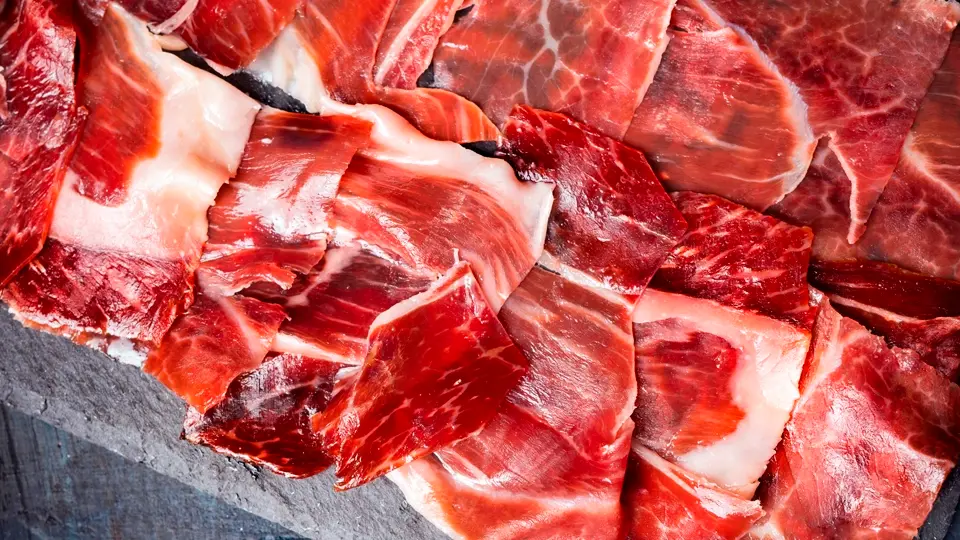Iberian Cured Meats: Unique Flavors from Spanish Pastures
Have you ever wondered where the extraordinary flavors of Iberian cured meats come from? These delicacies have a long history, dating back to ancient times when the Romans already appreciated the exceptional qualities of Iberian pigs on the Iberian Peninsula.

THE PASTURE IS THE ORIGIN OF FLAVOR
The origin of Iberian cured meats is closely linked to the unique ecosystem of the Spanish dehesa. These expanses of holm and cork oak trees, primarily found in Extremadura, Andalusia, and Salamanca, have been the natural habitat of Iberian pigs for centuries. These animals, with their characteristic black legs (hence the famous “pata negra,” or “black hoof”), found the perfect environment in which to thrive in these Mediterranean forests.
The need to preserve meat in an era without refrigeration led to the development of curing techniques that, over time, evolved into an art form. The inhabitants of these regions discovered that they could extend the shelf life of the meat and improve its flavor by using salt and air drying.
The Iberian pig’s unique genetics, together with its acorn- and herb-based diet, give these cured meats their distinctive characteristics.
Over the centuries, these artisanal techniques have not only survived but also been perfected. The production of Iberian cured meats is one of the finest examples of Spanish gastronomy, combining ancient tradition with a deep respect for the raw material.
Today, products such as acorn-fed Iberian ham, Iberian chorizo, and Iberian salchichón represent Spanish culture around the world, maintaining a tradition that connects us to our ancestors and their homeland.
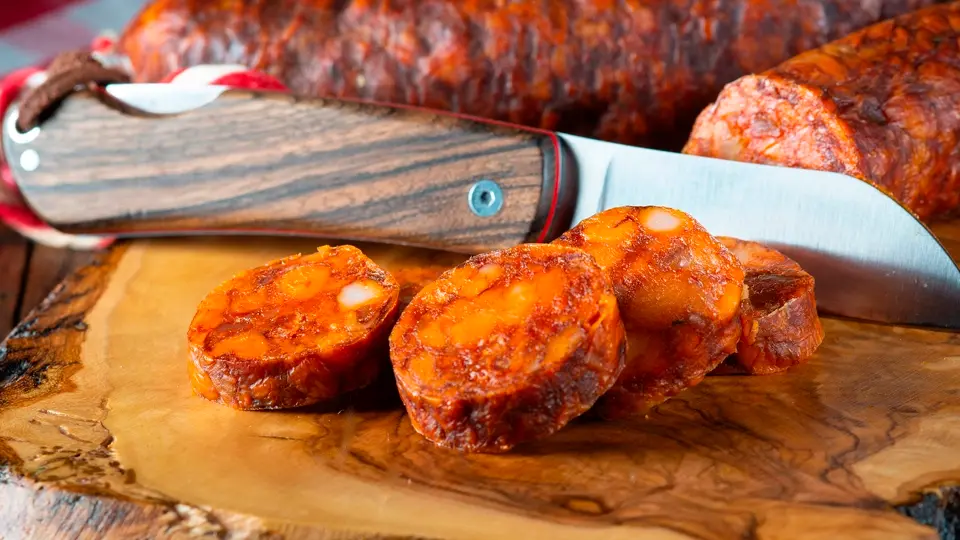
IBERIAN HAM VS. SERRANO HAM
Though similar at first glance, notable differences exist between the two. Iberian ham comes exclusively from Iberian pigs, which are characterized by their black hooves and their unique ability to infiltrate fat into the muscle. Serrano ham, on the other hand, comes from white pigs and has a shorter curing period.
Iberian ham has a more intense and complex flavor, with notes reminiscent of the pasture where the pig was raised. Additionally, its texture is juicier and melts in the mouth. In contrast, Serrano ham has a milder flavor and a more fibrous texture.
These differences are reflected in the price: while a Serrano ham can cost between $60 and $150, a high-quality Iberian acorn-fed ham can exceed $300.
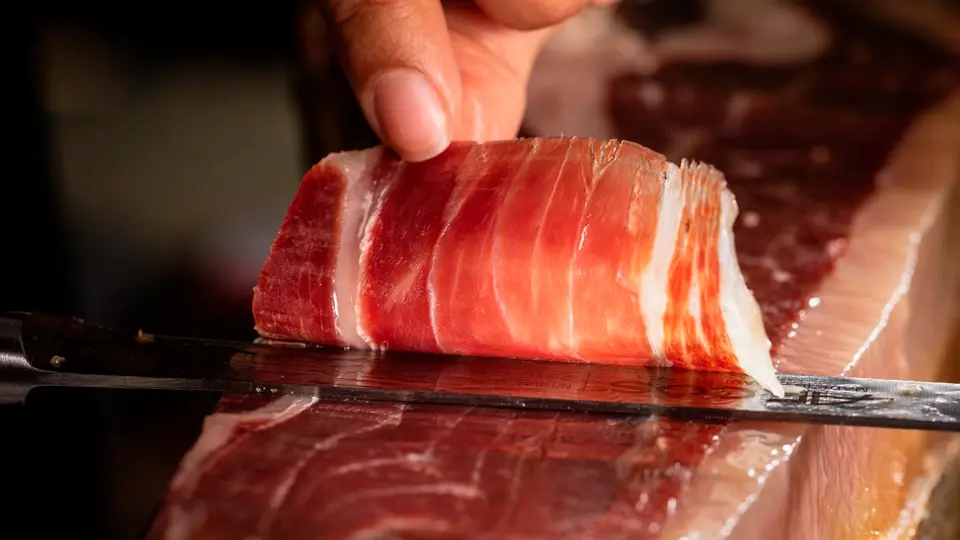
WHAT DOES “IBERIAN ACORN-FED” MEAN?
It is a seal of supreme quality in the world of cured meats. The term “de bellota” indicates that the pig was fed only acorns and natural pasture herbs during the montanera, which is the period from autumn to winter.
This special diet gives the meat extraordinary properties, including a high oleic acid and antioxidant content. The result is a healthier product with higher-quality fats and an unparalleled flavor.
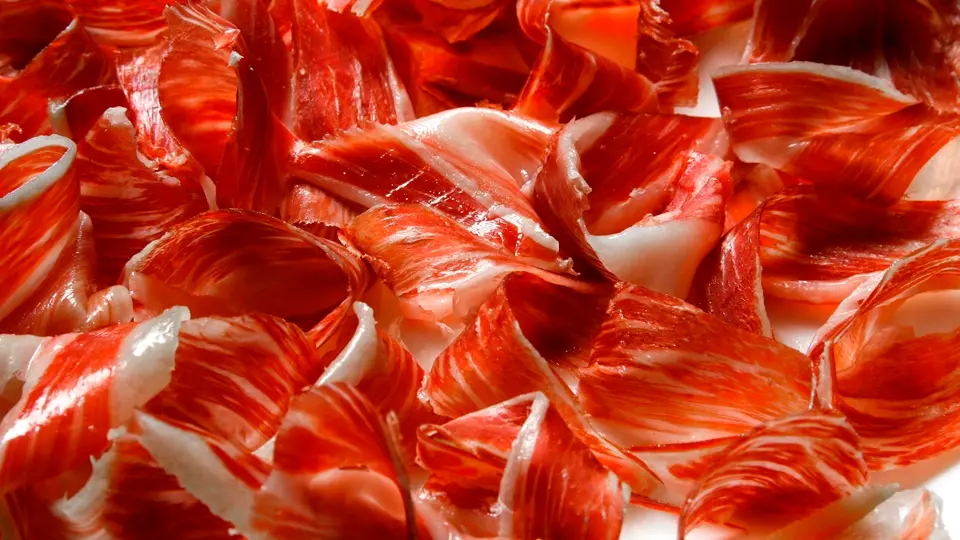
IBERIAN VARIETIES BEYOND HAM
Beyond ham, the world of Iberian cured meats offers unique products bursting with flavor. Iberian chorizo, for instance, is an explosion of aromas thanks to La Vera paprika, garlic, and a hint of wine. Its spicy flavor and just the right amount of fat make it irresistible in any form.
Iberian salchichón is characterized by its smoothness and peppercorns, which give it a milder flavor than chorizo. It is ideal for those who prefer balanced flavors without losing character.
Lomo ibérico loin is a lesser-known gem outside of Spain. It is a whole piece marinated in mild spices and slowly cured. Low in fat, it has a firm texture and an elegant flavor that pairs perfectly with smooth red wines.
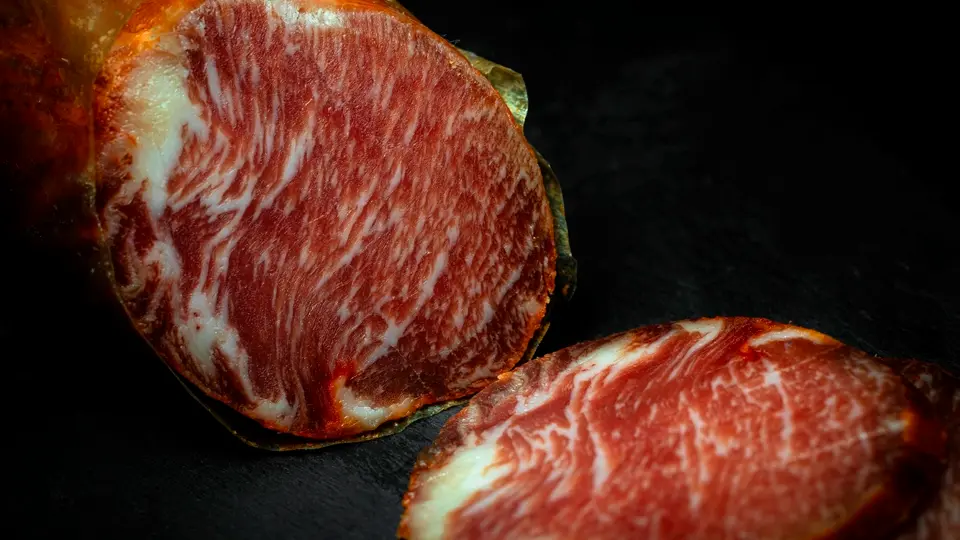
Lacón ibérico is also popular in Galicia, where it is typically boiled and served with turnip greens and potatoes. Although it is not Iberian pork, cecina de León deserves a special mention. It is a cured beef sausage similar to ham with a deep, smoky flavor that everyone loves.
Each of these products reflects centuries of tradition and expertise in the art of curing.
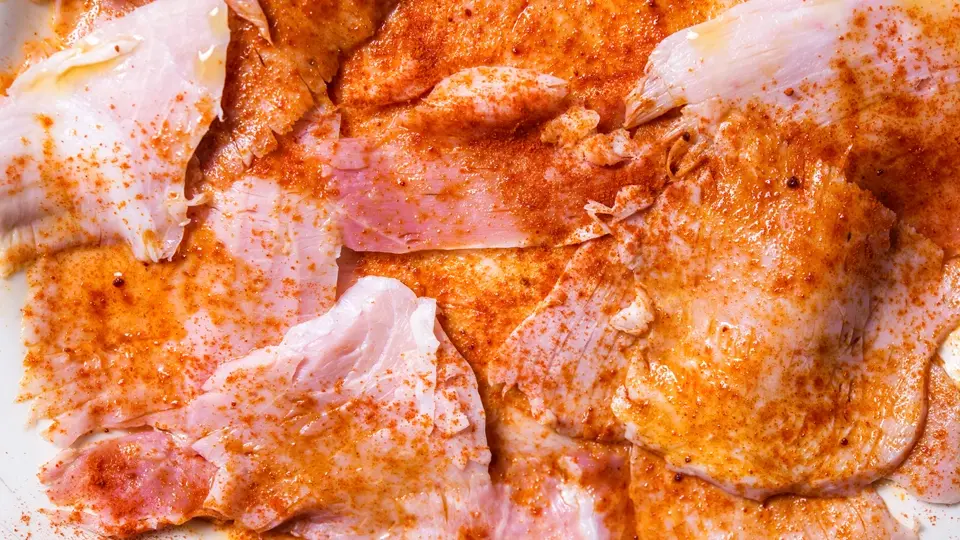
PRODUCTION AND ARTISAN TRADITION
The production of Iberian cured meats is one of Spain’s most deeply rooted culinary traditions. It is an artisanal process that combines patience, inherited knowledge, and respect for the raw material.
The process begins with selecting the Iberian pig and culminates in the traditional slaughter during the winter, taking advantage of the cold weather. Next, a delicate ritual begins. First, the meat is salted to slowly dehydrate it. Then, it is washed and dried. Finally, the long maturation process begins in natural drying rooms where temperature and humidity are strictly monitored.
Acorn-fed Iberian ham, for example, takes up to 48 months to develop its deep, characteristic flavor. Each region contributes its own touch: Extremadura paprika and the pure air of the Sierra de Huelva give each piece its unique character.
This know-how, passed down from generation to generation, defies the logic of industrial production. This is why each Iberian cured meat carries the unique nuances of its place of origin and the artisan who made it.
It’s not just about preserving food; it’s about preserving a cultural legacy, making every bite a living connection between the past and the present. The Iberian tradition is undoubtedly an art form that is appreciated with respect and emotion.
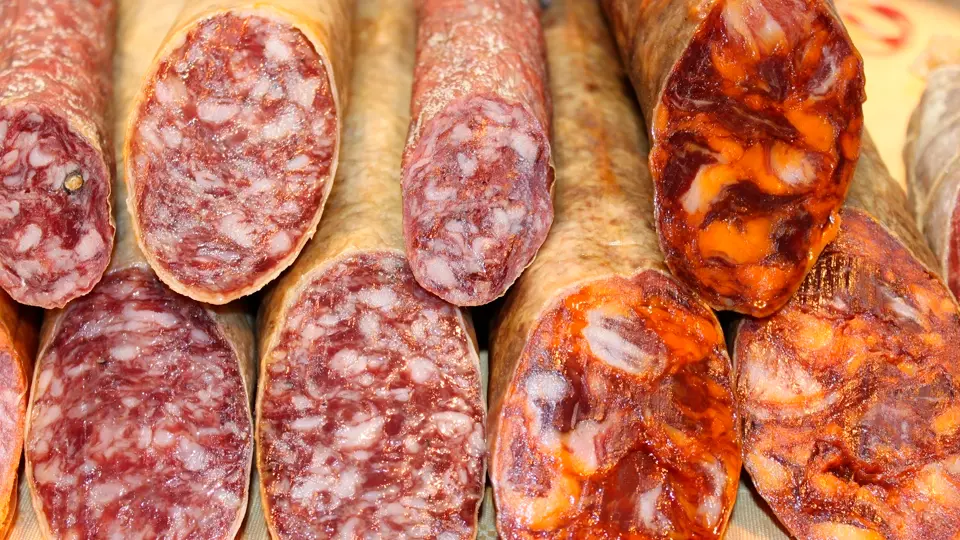
IBERIAN PRODUCTS: THE ART OF TASTING THEM
In Spain, tasting a good Iberian ham is almost a ritual. It’s not just about eating; it’s a complete sensory experience that requires time and attention to appreciate every nuance.
First, the temperature is essential. Iberian ham should be served at room temperature, never cold straight from the refrigerator. Ideally, take it out about 30 minutes before eating to allow the aromas and flavors to fully awaken.
The cut is another crucial element. The slices should be thin and almost transparent so they melt in your mouth. Achieving a good manual cut with a ham knife takes practice, but it greatly enhances the final experience. The perfect slice includes both muscle and marbling because it is precisely this fat that gives the ham its characteristic flavor.
Allow yourself a few seconds to appreciate how the flavor evolves in your mouth when tasting it. First, you will notice salty notes, followed by sweet nuances, and finally, a lingering aftertaste reminiscent of acorns and wild herbs from the pasture.
A full-bodied red wine, such as a Ribera del Duero, pairs perfectly with Iberian ham. However, fino and manzanilla sherries from Jerez are also excellent accompaniments that enhance its qualities.
Young red wines pair well with other cured meats, such as Iberian chorizo or salchichón. Iberian pork loin pairs especially well with medium-aged red wines.
The key to appreciating these delicacies is to take your time. Observe, smell, and taste each bite, allowing it to reveal centuries of tradition and expertise.
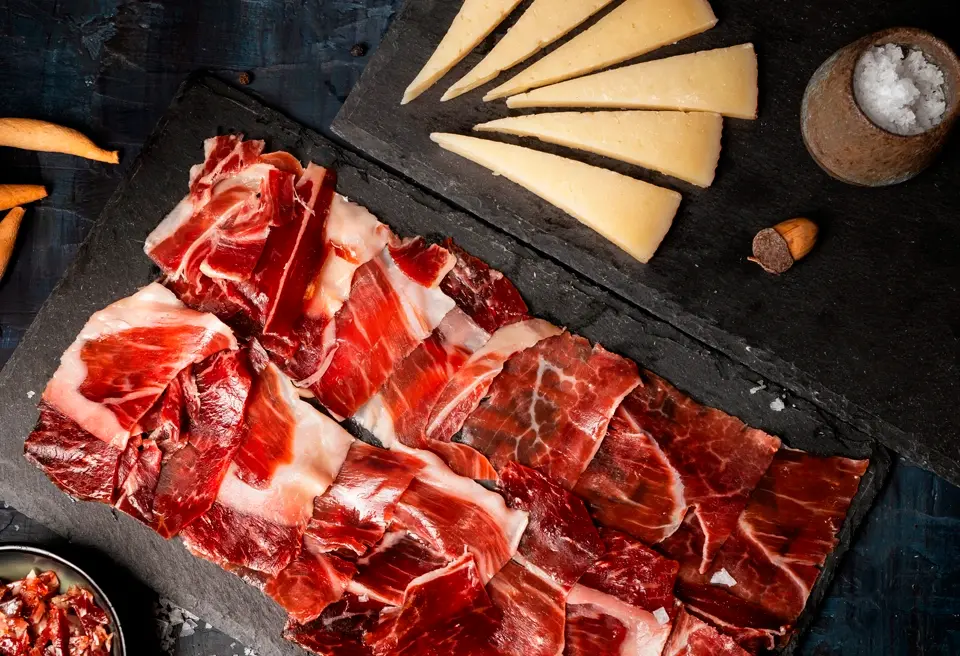
WE SHARE OUR CULINARY PASSION WITH YOU!
Join us on a culinary adventure through Andalusia with Carameltrail, where you can immerse yourself in the culture of Iberian ham.
Spaniards carry a passion for our cuisine in our DNA, and nothing makes us happier than sharing it. From the humblest Iberian salchichón to the most exclusive acorn-fed ham, each one is part of a legacy that deserves to be known, enjoyed, and preserved.
The next time you have the opportunity, treat yourself to these culinary treasures, and don’t rush. Engage all your senses. I promise you it will transform the way you understand gastronomy.
So, when planning your next trip, don’t hesitate: Come to Spain, explore our pastures, visit our wineries, and most importantly, sit down at the table.
